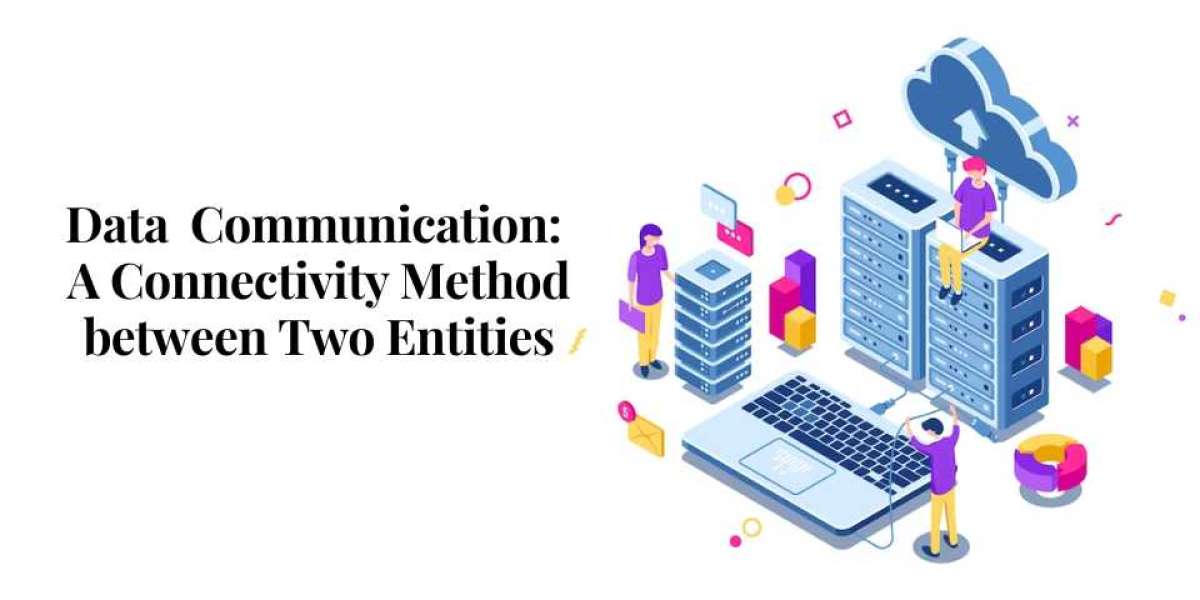Data communication is the process of exchanging digital information between two or more entities. It is an essential component of modern-day computing and is used to connect computers, networks, and other devices in a variety of settings. Data communication involves the transmission of data through a variety of mediums, including wired and wireless networks, radio waves, microwaves, and much more. Data communication is used to facilitate the exchange of information, files, and other data between two or more entities.
Data communication can be both local and global, allowing for the exchange of information between remote locations. Data communication is an important part of the overall communication process and is used to facilitate a variety of tasks from data transmission to data storage. Data communication is also essential for the development of the internet, as it enables the exchange of data between computers, networks, and devices around the world.
- Types of Data Communication
- Connectivity Methods
- Benefits of Data Communication
Types of Data Communication
Data communication is the exchange of data between two or more entities. It is a process used by computers and other devices to communicate with each other. There are many different types of data communication, including wired and wireless methods, local area networks (LANs) and wide area networks (WANs), and various types of internet connections.
Wired Communication: This is the most common type of data communication. It involves the use of cables and wires to connect two or more devices and transfer data. Examples include Ethernet cables, coaxial cables, and fiber optic cables.
Wireless Communication: This type of data communication does not require any physical connection between the two devices. Instead, it uses radio waves or infrared light to transmit data. Examples include Wi-Fi, Bluetooth, and cellular networks.
Local Area Network (LAN): A LAN is a network of computers and other devices, such as printers, located in close proximity. It is typically used to share data and resources, such as files and printers, between devices.
Wide Area Network (WAN): A WAN, on the other hand, is a network of computers and other devices located in different geographical areas. It is typically used to connect multiple LANs and enable data exchange between them.
Internet Connections: There are various types of internet connections, such as dial-up, DSL, cable, and satellite. These connections enable two or more computers to exchange data over the internet.
Connectivity Methods
Data Communication is the exchange of information between two or more entities in the form of digital data. It involves the transmission of digital information through a communication channel, such as a wire, cable, radio, optical fiber, or wireless medium. Data communication allows two or more entities to communicate with each other and share information.
There are several different methods used for data communication between two entities. These methods include wired technology such as Ethernet, Token Ring, and Fiber Optic; wireless technology such as Wi-Fi, Bluetooth, and cellular networks; and point-to-point methods such as dial-up, modem, and satellite. Each of these methods has its own advantages and disadvantages, and the choice of which one to use depends on the type of data being transmitted and the distance between the two entities.
Ethernet is the most commonly used wired technology for data communication. It is a high-speed network transmission protocol that is used to connect computers, servers, and other network devices. Ethernet is reliable, secure, and cost-effective, making it the preferred method of data communication for many businesses.
Wi-Fi is a wireless technology that is used to connect computers, smartphones, and other devices to a wireless network. Wi-Fi is fast, secure, and convenient, but it requires a wireless router to be installed in the area to provide connectivity.
Bluetooth is another wireless technology that is commonly used for data communication. It is a low-power wireless technology that is used to connect two devices within a certain distance. Bluetooth is often used to connect wireless keyboards, mice, and headphones to computers and smartphones.
Satellite data communication is used to connect two entities that are located far away from each other. Satellite communication systems use orbiting satellites to relay data between two or more locations on the ground.
Dial-up and modem data communication are two slow point-to-point methods of data communication. Dial-up is an analog connection that uses a telephone line to connect two entities, while a modem is a device that connects two computers using a digital signal over a telephone line.
Benefits of Data Communication
Data communication is the process of sending and receiving information between two entities. It is an essential part of modern technology, as it allows for the exchange of data between different devices, such as computers, printers, scanners, and more. Data communication enables efficient and accurate communication between two entities, allowing for the exchange of information in a more efficient manner.
The main benefits of data communication include increased efficiency, reduced costs, improved accuracy, and greater flexibility. Increased efficiency is achieved through the ability to transfer data quickly and accurately from one device to another. This reduces the amount of time it takes to complete tasks, allowing for more efficient operations. Reduced costs are achieved due to the decreased need for manual labor in the data-transfer process. Improved accuracy is achieved through the use of reliable data communication protocols. Finally, greater flexibility is achieved through the ability to connect different devices to each other, allowing data to be shared across different platforms.
Overall, data communication is a powerful and reliable tool for exchanging information between two entities. Its benefits include increased efficiency, reduced costs, improved accuracy, and greater flexibility. These benefits help to increase the effectiveness of operations and can lead to increased productivity.
In Conclusion:
Data communication is a powerful tool for connecting two entities and exchanging information. It is essential in order to be able to communicate effectively and efficiently, and LiveWebTutors provides Assignment Writing Help as an easy and reliable way to do just that. With its extensive features and user-friendly interface, LiveWebTutors is the perfect choice for anyone looking to establish a secure connection between two entities.







